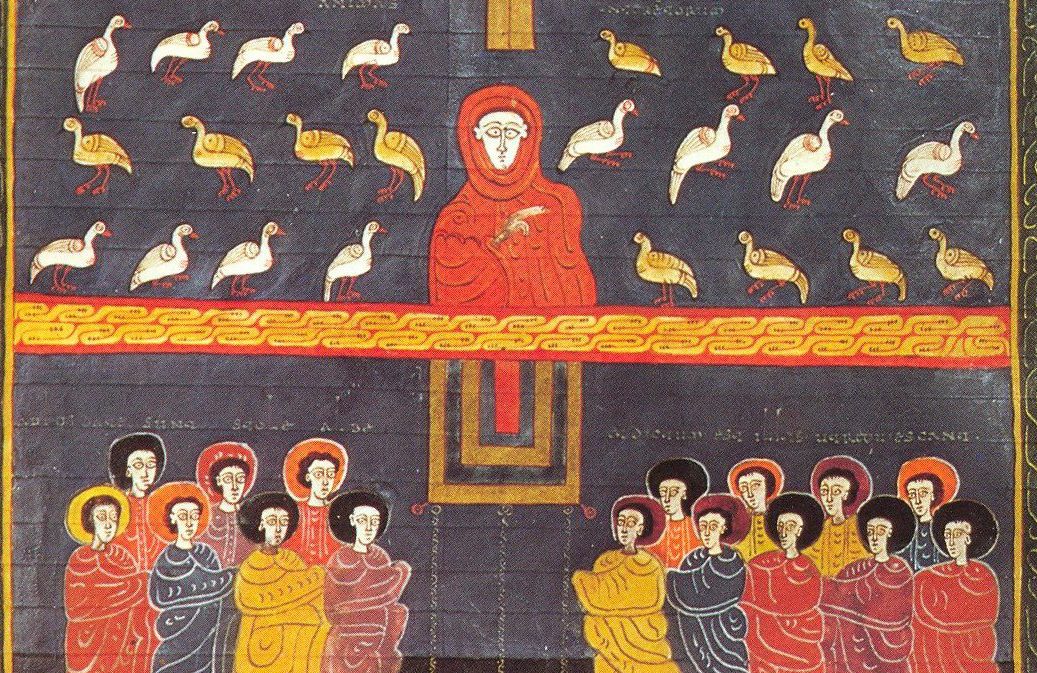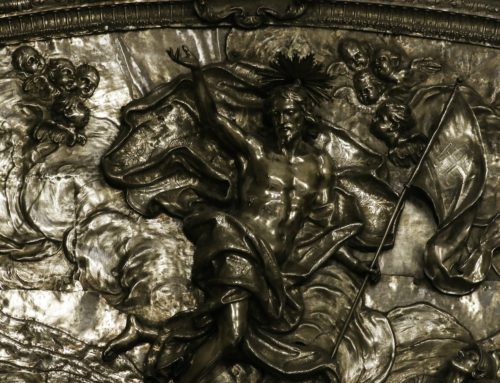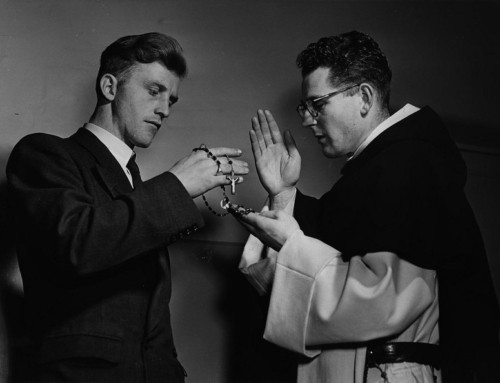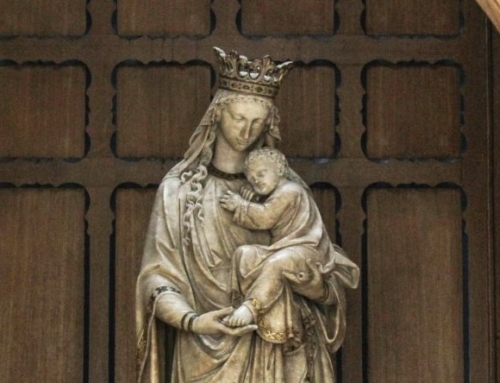Servais Pinckaers, O.P. The Spirituality of Martyrdom: to the Limits of Love. Translated by Patrick M. Clark and Annie Hounsokou. Washington, D.C.: The Catholic University of America Press, 2016.
Our Lord said, “‘Blessed are those who are persecuted for righteousness’ sake for theirs is the kingdom of heaven. Blessed are you when men revile you and persecute you and utter all kinds of evil against you falsely on my account. Rejoice and be glad, for your reward is great in heaven, for so men persecuted the prophets who were before you’” (Mt 5:10-12).
The eighth Beatitude, the starting point for Fr. Pinckaers’ analysis of Christian martyrdom, contains a paradox: persecution for Christ is accompanied by great joy. Following St. Augustine and St. Thomas Aquinas, Pinckaers sees this Beatitude as the summary of the others, and uses it to explore the question of martyrdom and its place in the Christian life. Martyrdom, Pinckaers concludes, is thus not about death. Rather “the essential core of martyrdom is the proclamation of faith in Jesus as the Son of God” (47). It is about giving witness to Christ in the same way that Christ witnessed to the world, including through His Passion and death.
Pinckaers opens his book with a discussion of spirituality and martyrdom. Spirituality is not a tradition, but life in the Holy Spirit based on Jesus’ life as described in the Gospels. Jesus predicts persecutions and death for Himself and for his followers throughout the Gospels. The final petition of the Our Father is a request not to be led into temptation, the ultimate test of faith. Persecution is the summit of the Christian life precisely because the other Beatitudes are all present as “the various manifestations of joy and corresponding foretaste of the promised reward” (22). The later traditions of the Church (Benedictine, Dominican, Ignatian, etc.) blossom in different ways, but they all have their roots in the spirituality of martyrdom.
In the next three chapters, Pinckaers explores how to understand the martyr as a witness. He begins by examining how the term martyr (martus in Greek) was used in non-biblical Greek, the Septuagint, the Gospels and the New Testament, and early Christian literature. Martus means witness, and the religious usages all point to God’s action or identity. The martyrs are thus witnesses of Jesus Christ as the Son of God.
The testimony of the martyr primarily concerns a transformation of the internal life. “The object of the martyrs’ witness is the penetration of Christ’s presence in them” (54). With their internal transformation, their testimony “manifests its reality in the most tangible way because [this event takes on] physical shape in the torments that they endure with a strength of soul so powerful that it astonishes even their executioners” (57). Physical death is essential to martyrdom because “[t]he face of death is not indifferent; it consummates and finalizes the witness to Christ” (70). This testimony is profoundly Eucharistic and eschatological. Jesus’ own Passion, which includes the Last Supper as an essential element, points to His future reign in glory with the heavens and the earth subjected to Him.
Pinckaers next explores the theme of martyrdom in the writings and the lives of St. Ignatius of Antioch, Pope Clement I, and Tertullian. These writers present three different expressions of martyrdom in the early Church. For Pinckaers, St. Ignatius of Antioch represents the pinnacle of martyrdom spirituality, especially as articulated in his Letter to the Romans:
“These texts are profoundly evangelical: centered on Christ, and animated by the yearning to be with him, implying a personal journey through the Passion so as to attain true life. They are also trinitarian: the inspiration comes from the Holy Spirit, the living water that calls one to go to the Father; such is the sentiment of Jesus himself, who desired with a great desire to go the Father.” (92)
The last two chapters briefly examine how St. Augustine and St. Thomas Aquinas understood and presented martyrdom. St. Augustine provides much of the language and structure for how we theologically understand martyrs, including their spiritual combat and martyrs as the seeds of the Church. St. Thomas Aquinas integrates martyrdom into his account of the virtues and the gifts of the Holy Spirit.
“The ideal of martyrdom, understood concretely,” which dominated Christian spirituality in a direct way until the legalization of the faith in the fourth century, gave way to other spiritualities with “the ideal of contemplation and loving wisdom” (24). While these new spiritualities maintained “a very close link to the ideal of martyrdom,” Pinckaers explicitly emphasizes that a confessor is not the same as a martyr (33). The confessor’s life of great holiness and interior transformation in some way does not equal that of the martyr because the confessor lacks two essential elements of martyrdom. The confessor “has not received the seal of death that consummates [the act of faith] . . . [and] his witness is not yet a complete reproduction of the Passion of Jesus” (70-71).
This work is classic Pinckaers. Starting with the Beatitudes and working through the Gospels, the New Testament, and the Church Fathers, Pinckaers builds up a convincing case for why martyrdom is the summit of the moral life. He does not shy away from tackling objections raised in both the Catholic and Protestant traditions.
While this book is Pinckaers at his finest, it may not be an ideal introductory work. As Fr. Romanus Cessario, O.P., notes on the book’s back cover, this book completes Pinckaers’ project on the Beatitudes as the centerpiece of Christian living, which is described most completely in The Sources of Christian Ethics. While Pinckaers does provide a brief summary of his earlier work in this volume, having a greater understanding of his larger project opens the contents more fully.
This volume is a translation of the original French edition published in 2000. One of the two translators, Patrick Clark, provides a helpful preface to introduce their translation. Clark himself is the author of a pertinent book, Perfection in Death: The Christological Dimension of Courage in Aquinas (Washington, DC: CUA Press, 2015). One challenge with this work by Pinckaers is that it has a choppy feel, lacking the smooth transitions of a polished volume. After two substantive chapters, six of the remaining seven are quite short with large sections comprised of long quotes, many of which lack deeper analysis. The final five pages that comprise the entire treatment of St. Thomas on martyrdom here appears almost to be tacked on to demonstrate that the continuity of Christian thought on martyrdom did not change substantively. While such an excursus works well in a classroom, and indeed the introduction notes that this “book was adapted from lecture notes” (xiii), it gives the reader a sense that something is lacking. These limitations are minor compared to the important content presented here and should in no way deter the interested reader.
The times of the martyrs of the early Church provided essential formation for the Christian life. Pinckaers demonstrates that martyrdom is the summit of Christian life as expressed by Jesus in the Beatitudes. It is the perfect imitation of our Savior and His redemption of mankind through His death on the cross. Martyrdom is an act of faith involving death in which one’s interior and exterior life is totally transformed in, by, and for Jesus Christ.
✠
Image: Facundus, The Souls of the Persecuted Martyrs (Mozarabic Altar)
To download a printable PDF of this Article from
Dominicana Journal, Winter 2016, Vol. LIX, No. 2, CLICK HERE.






